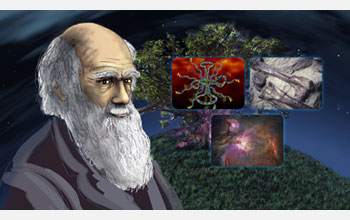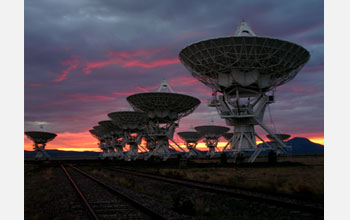All Images
Media Advisory 09-031
Evolution of Evolution: A National Science Foundation Webcast
Honoring 150 years of "On the Origin of Species;" Noor is recipient of Darwin-Wallace Medal
This material is available primarily for archival purposes. Telephone numbers or other contact information may be out of date; please see current contact information at media contacts.

On Nov. 24, 1859, Charles Darwin published "On the Origin of Species." It became the most significant scientific work in the last two centuries, challenging and changing how the world views nature, the environment and mankind.
Credit: Illustrations by Nicolle Rager Fuller, National Science Foundation (background and center); © 2009 JupiterImages Corporation (top right); NASA, ESA, M. Robberto (Space Telescope Science Institute/ESA) and the Hubble Space Telescope Orion Treasury Project Team (bottom).
Download the high-resolution JPG version of the image. (1.1 MB)
Use your mouse to right-click (Mac users may need to Ctrl-click) the link above and choose the option that will save the file or target to your computer.
Jim Secord, the director of the Darwin Coorespondence Project, discusses popular mythology surrounding natural selection.
Credit: Kevin Norris/National Science Foundation and University of Cambridge

Play Audio
Mohamed Noor, professor and associate chair of biology at Duke University, discusses Charles Darwin's idea of gemmules and the creation of new species. Noor is a recipient of the 2009 Darwin-Wallace Medal Award.
Credit: Audio by Kevin Norris/National Science Foundation; image © 2009 JupiterImages Corporation and James J. Caras/National Science Foundation
Professor of geological sciences at the University of Idaho, Judy Totman Parrish, discusses how geographic evolution will change Earth's continents.
Credit: Kevin Norris/National Science Foundation and University of Idaho

Play Audio
Anthony Remijan, an assistant scientist with the National Radio Astronomy Observatory, discusses how the first constituents for life could be found in outer space.
Credit: Audio by Kevin Norris/National Science Foundation; image by Dave Finley, NRAO/AUI/NSF


